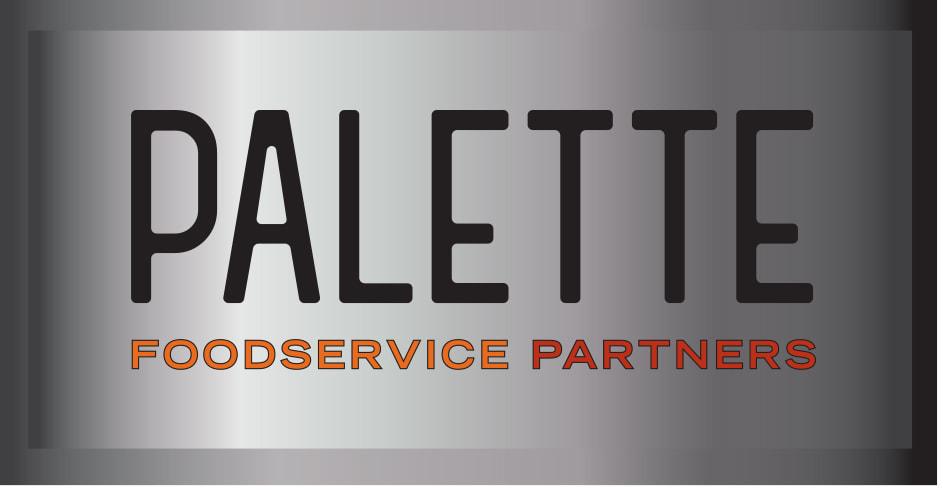 Artificial intelligence is already proving its potential to help restaurants fine-tune their brands — largely by creating the kinds of experiences that specific guests crave. You may already be using AI algorithms to analyze guests’ order histories and preferences to provide targeted food recommendations, but the technology’s capabilities expand beyond that. Do you have guests who ask a lot of questions about your menu or otherwise need help landing on a dish? AI voice-enabled assistants can give guests information about a dish’s ingredients and nutritional value, as well as help guests select meals — easing the burden on staff and likely speeding ordering times. Upon a guest’s arrival at your restaurant, it can greet a repeat guest by name, remember their favorite table, and suggest menu items or specials they are apt to enjoy. Expect to see AI play a larger role in building the ambiance of restaurants too — by suggesting music and lighting based on your guest data, or offering immersive dining experiences through virtual or augmented reality. On the service side, an AI chatbot on your app or website can help you make your ordering more accurate and also respond to customer service enquiries at any hour of the day. When guests leave reviews, AI can screen their input and pull out key insights you can use to improve your experience. Some of AI’s benefits still feel futuristic, and the earliest adopters are bound to hit snags along the way, but it’s worth paying attention to how the technology is moving the needle on the experience and service a business provides. Consumer expectations are bound to shift as a result.  We eat with our eyes – or at the very least, the images we see of a dish have more power to sway our ordering choices than the text descriptions we read. In fact, Grubhub found that including professional photos in your menu can increase your sales by 30 percent. Even if you don’t want to overload your menu with images, there are many places beyond your menu where images can drive sales – on your website, in app-based communications to guests, in social media posts. And as generative AI continues to improve, it’s becoming easier for restaurants to generate accurate, quality images of menu items – all with just a series of text prompts. Two startups are making it possible for restaurants to do just this. Hackernoon reports that Lunchbox collaborated with OpenAI to launch a food photo generator, and SWIPEBY has a text-to-photo tool that generates food photos based on menu descriptions. It will likely take a few tries, but you may be able to create a close likeness of the profitable dishes you want to promote by simply describing their ingredients and appearance to these tools.  Across the foodservice industry, AI is impacting operators’ ability to pinpoint inefficiencies and make real-time adjustments. This year, look for the technology to help restaurants streamline menus during busy shifts – making it possible to focus on items that require less complicated preparation when a kitchen is at capacity or understaffed, according to TechHQ. In a similar vein, AI is allowing more restaurants to use dynamic pricing during peak periods so they can maximize the benefits of churning out orders at those times – or possibly encourage people to stagger those orders at off-peak hours. On the menu itself, AI can identify a restaurant’s most profitable items (or unprofitable items) and highlight the winners for guests in order to help drive more sales in that direction. AI has applications after the meal too: A recent Paytronix report says restaurants on its ordering platform will be able to use a ChatGPT-powered chatbot to automatically engage with guests after they finish their meal, then route their feedback to the store manager.  Artificial intelligence may already be supporting various tasks in your restaurant, from automating scheduling to monitoring inventory to personalizing staff training. But it can also serve as a self-contained brainstorming meeting of sorts by helping you develop new ideas that can keep your restaurant fresh for guests. For example, in recent months, chef Tom Aviv made headlines for using Dall-E, the image generator from OpenAI, to design the menu and décor for his restaurant Branja in Miami. One of the results was a chocolate mousse inspired by Picasso. Such uses of AI tools can help you formulate new recipes, identify different ingredient combinations, create engaging menu descriptions, and help you identify ways to bring your restaurant’s décor and online presence into better alignment with your brand. These tools need human intervention to generate the best results, but if you give them increasingly specific prompts, they can trigger new ideas in you that you can use to offer exciting experiences to guests.  Artificial intelligence may feel like one technology that’s more in the purview of larger, well-resourced brands than smaller ones, but increasingly, restaurants of all kinds are demonstrating how the technology can be helpful – and it doesn’t have to come at great expense. To be sure, AI is embedded in tech tools that help restaurants schedule staff and anticipate traffic flow. But a panel at the recent Fast Casual Executive Summit revealed that brands are experimenting with AI in a range of simpler ways that may make a difference to restaurants that haven’t already adopted a lot of tech. Your loyalty program, for instance, should use AI to help you pinpoint lapsed guests and target them with the right messages. Even using ChatGPT for free (or for a low subscription cost) may help you generate new ideas for hashtags in your social media posts, fine-tune job descriptions you can use to recruit staff, or come up with taglines to use in your online advertising.  The speed with which artificial intelligence has become an everyday tool in our lives can leave people both excited about its potential and wary of its risks. The same is true about the use of AI in restaurant operations. If your staff is stuck somewhere between wanting to embrace it and resisting it, help them separate fact from fiction. AI can support your restaurant by helping your managers create more efficient schedules, predict sales and facilitate communication among staff. What AI can’t do is replace human roles – it’s more about streamlining tedious tasks within a restaurant, reducing errors and freeing up time for staff to serve guests. More broadly, its integration with a restaurant’s existing POS can help operators more readily connect the dots between their data sources and make key decisions that will help optimize the business. There is no doubt that AI will play a key role in the development of the industry, so it’s important to embrace its applications – but it still requires people to monitor it as they use it to make decisions.  As artificial intelligence becomes a larger part of consumers’ daily lives, it is taking a couple of distinct paths in the restaurant industry. Its generative applications are helping restaurants respond in real time to guest questions in the drive-thru line, as well as draft emails to staff and develop ideas for guest promotions. Its predictive applications are enabling restaurants to make more educated decisions about how to manage inventory, schedule staff, and anticipate guest traffic over a holiday weekend. These applications are increasingly being woven into restaurant tech platforms and becoming just a part of doing business – Square and AzureOpenAI are among the companies whose generative and predictive AI applications being adopted by large brands right now, Restaurant Dive reports.  When deciding where to invest in technology improvements, it makes sense to focus on the back of the house first. Once you have support with employee scheduling, inventory management and other operational functions, your staff should have more time to deliver positive experiences for guests (which also helps them feel more positive about their jobs). This is the approach that Domino’s – long a trendsetter in the restaurant tech space – is taking with their embrace of new AI tools the brand is developing in partnership with Microsoft Cloud and Azure OpenAI Service. According to a recent report from Nation’s Restaurant News, Domino’s is working on a generative AI assistant to support employees and personalize customer service, with special focus on invisible back-of-house technology. The brand’s chief technology officer said she believes helping the team access information and make decisions more quickly can help them respond more promptly and effectively when mistakes are made. This makes people’s jobs easier to do – and will likely trickle into the front of the house in the form of shorter order times, fewer mistakes and a better overall experience. It’s worth bearing in mind as you consider tech priorities, regardless of whether you’re implementing generative AI or not.  Each month, artificial intelligence-powered tools are being adopted in more guest-facing restaurant roles. As a recent article in The Spoon put it, we will likely see the biggest use of this technology in quick-service roles, in particular, because they tend to be lower-paying, higher-turnover jobs. Wendy’s and White Castle are two such brands stepping into this territory – and now delivery providers including Uber Eats and DoorDash also have plans in the works for AI-powered ordering. Once brands have established some history with guest-facing AI, we’ll know more about how it is impacting order accuracy, labor challenges and the guest experience. If the changes are positive, restaurants beyond the quick-service category may well look for ways to weave it into their models too. Could you see a way to use chatbots or other AI tools to support your service?  Right now and into the foreseeable future, artificial intelligence-powered technology is being used to augment human skills by taking on tedious tasks and serving as an assistant to human workers. For example, as a recent Nation’s Restaurant News article indicates, a restaurant using AI-powered tech to track human employees packing orders can alert a staff member in real time when they should put fries in a bag to ensure they don’t get cold waiting to be collected. That said, tasks that are already handled by assistants now — scheduling staff, ordering food and other administrative tasks, for example — may soon be handled by AI with oversight from a restaurant’s general manager. As a result, assistant general manager roles could be reframed in the future. There is potential there to free up resources that can be reapplied in other areas. |
Subscribe to our newsletterArchives
April 2024
Categories
All
|



 RSS Feed
RSS Feed